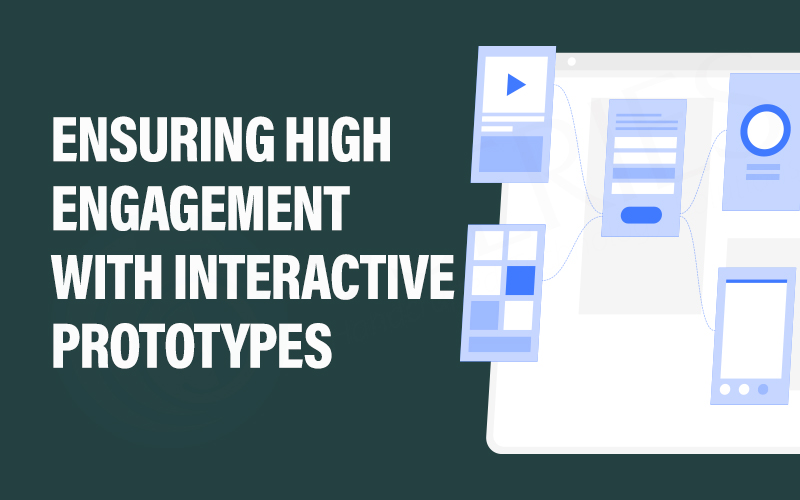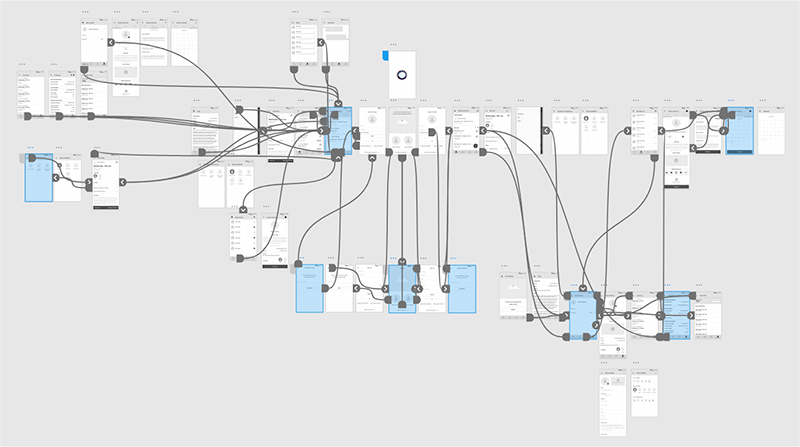Ensuring High Engagement with Interactive Prototypes
Designers always strive to show beautiful pictures to customers by adding stylish effects to images and crisp photos and resort to different tricks. They realize that these designs with eccentric visuals and graphics can turn into the most feasible, functioning, and a successful product. The pictures in such beautiful wrappers are then sent to the customer for the designers to convert them into excellent prototypes.
A prototype is a rudimentary working model of the app. App prototyping is an integral part of a website UI/UX design service in the development process. It gives a visual insight into the features and the flow to be incorporated within the final app regarding the scope, needs, and expectations. A prototype acts as a bridge between the creative thought process and the final product.
Benefits of Creating Engaging App Prototypes
Creating a prototype that demonstrates the functionality of an application in development can positively impact the final design as well as the overall project. Here are six ways interactive prototypes can help your application initiative:
Different Options Available
Low fidelity prototypes are quicker to create as they are fundamental hand-drawn diagrams of how it flows from one stage to another. The level of detail and realism is low, and it aims at testing and validating the design early on in product development. Medium fidelity prototypes add significantly greater details and interactions and are capable of undergoing usability testing. They consist of clickable areas which provide a navigational guide within the app and give insights to the user flow within the app. High fidelity prototypes have the highest level of design and functionality incorporated in the product prototype. They’re fully interactive and clickable, which brings you one step closer to getting validation from customers and investors.
Understanding Key Interactions
Time and again, in UX-heavy projects or UX-heavy phases of larger projects, the clickable prototype emerges as a critical tool for capturing and refining the user experience. To bottom-line it, clickable prototypes are designs you can wire up and are cheap to create. They help you quickly understand whether your solution works or not, and even provide peripheral insight into missing requirements. While end-users can view and comment on a paper-based version of an application, they will not be able to fully understand the nature of critical interactions until the application development. Creating a clickable prototype is the next logical step in design and brings a design to life.
Reducing Development Time
The goal is to learn as quickly and inexpensively as you can, and clickable prototypes support those goals perfectly. Way back in the day, you would need to write at least some code to discover how well your designs solve your UX challenges. Using clickable prototypes allows you to move quickly, and only start the relatively expensive job of coding once you’re certain of your solutions. Prototyping enables identifying misunderstandings and addresses them as early in the design process as possible. The sooner you process the issues, the better, saving you time and money.
High-performing Features
Gathering of usability data earlier in the process via product prototypes leads to better user experience. It gives accurate insights into the preferred flow and helps eliminate redundant features. Visualizing the relationship between different components within the app results in the development of an interactive mobile app that ranks high in user experience. Prototypes also lead to the development and integration of more substantial features. They make you understand how a set of different features work well together while designing the mobile app’s UI. Prototyping is just like a simulator of an app that helps you understand how the user progresses with every step in an app.
Wrapping up
Irrespective of the complexity of the prototype developed, the prototyping process is a crucial part of the app development cycle. Choosing the type of prototype or prototyping tool depends upon the resources available to you. An integral part of the services provided under the mobile application development from 9series is developing a prototype based on your requirements. Be it desktop or mobile, web or native — an iterative prototyping process will deliver the required outcomes. You can pick the right tools and development team for the job to ensure that the designs meet your users’ needs.
Recent Posts
Deep Learning Explained: Understanding the Brain Behind AI
The Intersection of AI and IoT: Creating Smarter, Connected Environments
The Evolution of AI: From Simple Algorithms to Neural Networks
The Role of AI in Sustainable Development
Scaling New Heights: Integrating Advanced Technologies in Startup Product Engineering

